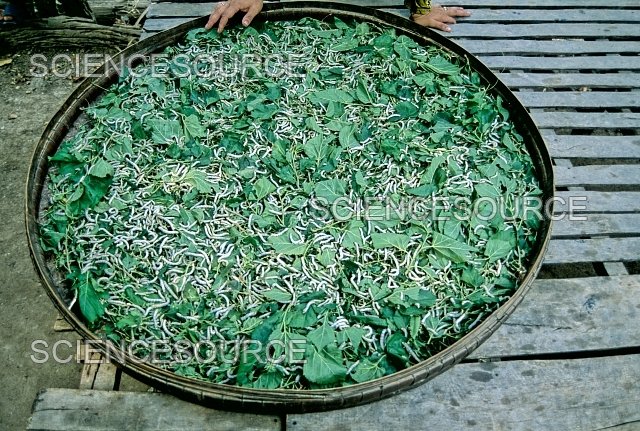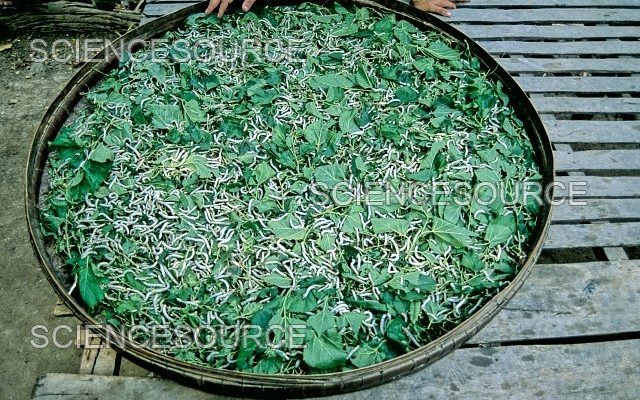
Getting started with silkworm rearing is surprisingly simple. You’ll need a few supplies, a bit of space, and a healthy dose of curiosity. This project not only teaches students about biology and life cycles but also enhances their responsibility and teamwork skills. Let’s dive into how you can set up and run a silkworm rearing project in your school, step by step.
Understanding Silkworms and Their Life Cycle
Silkworms, or Bombyx mori, are the larvae of the silk moth. They are indeed intriguing creatures, with a life cycle that takes them from egg to cocoon in about six weeks. The cycle consists of four stages: egg, larva, pupa, and adult moth. Here’s a quick breakdown:
- Eggs: Silkworms hatch from tiny eggs that are often smaller than a pinhead. It’s amazing how such tiny beginnings can lead to something as luxurious as silk.
- Larval Stage: Once hatched, the larvae, or caterpillars, begin to eat—often munching on mulberry leaves. This stage lasts around 4 to 6 weeks, and during this time, they will molt several times, growing significantly.
- Pupa: After the larval stage, they spin a cocoon made of silk thread. Inside, they undergo metamorphosis and develop into moths.
- Adult Moth: The adult moth emerges from the cocoon after about 10 days, ready to start the cycle anew by laying eggs.
Understanding this cycle is crucial for students. It highlights the delicate balance of nature and provides a real-life application of biological concepts. Honestly, witnessing this transformation firsthand is like watching magic unfold!
Setting Up a Silkworm Rearing Project
Getting started with silkworm rearing doesn’t require a lot of fancy equipment, but you will need some essentials. Here’s how to set up your project:
- Materials: You’ll need silkworm eggs, mulberry leaves (or a suitable substitute), containers for rearing, and a comfortable environment with moderate temperature and humidity.
- Location: A classroom or lab with enough space and the ability to control temperature is ideal. Silkworms thrive best between 20-28°C (68-82°F).
- Feeding: Mulberry leaves are like *fine dining* for silkworms. Ensure they have a steady supply to promote healthy growth.
Let’s break down these points a bit more. Start by sourcing your silkworm eggs from a reliable supplier. Remember, these eggs can often be ordered online or through agricultural supply stores. Make sure to check that they’re fresh and viable for the best results. Then, set up a comfortable environment — think of it as creating a cozy home for your silkworms!
The Role of Students in the Project
This project isn’t just about watching silkworms grow; it’s also about teamwork and responsibility. Assigning roles can help keep students engaged and excited. Here are a few ideas for responsibilities:
- Caregivers: Some students can be in charge of feeding the silkworms daily, ensuring they have fresh leaves and clean containers.
- Documenters: Others can record observations, noting the growth stages, feeding habits, and any changes they notice. This helps with understanding the life cycle and keeps a record of the project.
- Researchers: A group can delve deeper into the history of silk, its uses around the world, and the ecological impacts of silk production.
This collaborative effort not only enhances learning but also allows students to develop soft skills like communication and leadership. You might find them excitedly discussing the changes in their silkworms, sharing findings, and making plans for their silk production!
Challenges and Solutions in Silkworm Rearing
Like any project, silkworm rearing comes with its challenges. Here are a few common issues, along with solutions:
- Health Issues: Silkworms are susceptible to diseases. Ensure good hygiene and avoid overcrowding in their habitat to keep them healthy.
- Feeding Problems: If silkworms refuse to eat, check the quality of the leaves. They are very particular about their food. Fresh, tender mulberry leaves work best.
- Temperature Control: If the temperature is too low or too high, it can affect their growth. Keep an eye on the thermometer!
Addressing these challenges offers practical lessons in problem-solving. Students learn that setbacks can happen, but with persistence and a bit of research, they can find solutions.
The Benefits of Silkworm Rearing Projects
There’s so much to gain from a silkworm rearing project. Beyond the biological lessons, students also benefit in several other ways:
- Hands-on Learning: Students engage directly with nature, which can enhance their observational skills and foster a deeper appreciation for life sciences.
- Teamwork and Responsibility: Working together on a project teaches valuable skills. Each student contributes to the overall success, creating a sense of community.
- Connection to History and Culture: Silk production has a rich history, especially in countries like China and India. Learning about it helps students understand its global significance.
Honestly, seeing the excitement in students when they share their findings or marvel at the process of cocoon-making is priceless. It’s more than just a project—it’s a gateway to understanding broader concepts in biology, ecology, and economics.
Silkworm rearing as a school agriculture project is more than just a fun classroom activity; it’s a *journey of discovery*. Students get to witness the entire life cycle of silkworms, develop responsibility, and engage with one another in meaningful ways. Whether it’s the joy of watching a silkworm spin its first cocoon or the excitement of harvesting silk, each step offers a unique lesson.
As educators, encouraging curiosity and exploring nature through projects like this can ignite a passion for science and agriculture in students. So, why not embark on this silkworm adventure? It might just spark a lifelong interest in biology, agriculture, or even environmental stewardship. Who knows, maybe one day one of these students will become a *silk mogul* or an environmental advocate!

